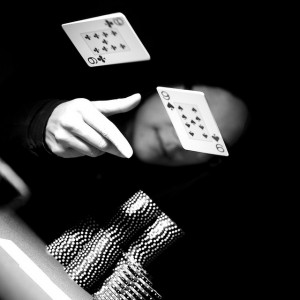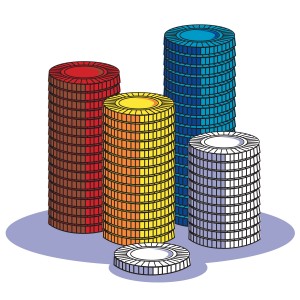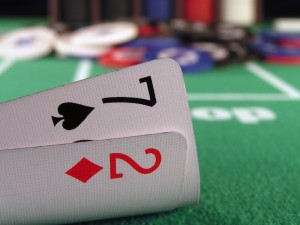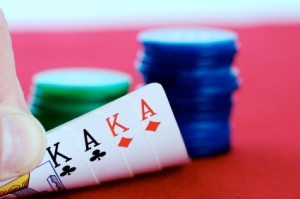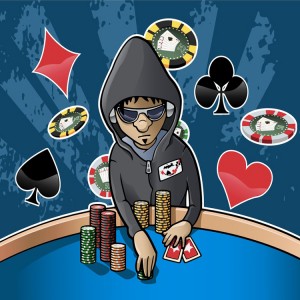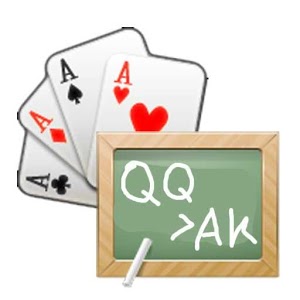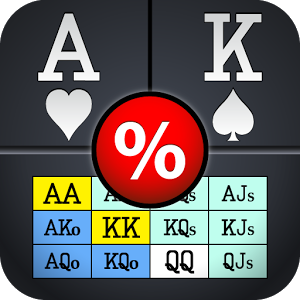In my first article I discussed the merits of single tabling. In this article I am going to look at what you can learn from playing shorthanded. This article is not going to talk about the required tactics and strategy needed to beat a shorthanded table (I will save that for another day). We are going to concentrate on the skills that you will learn from playing shorthanded and how they will help you when (or indeed if) you return to full tables.
Shorthanded play to me means 4 players or less. In recent times, the term has been associated with 6 handed or less because of the presence of 6 max tables. At these tables you need to refine your play, but you would be better off adopting a 10 player strategy over what I call a “true” shorthanded strategy. With 4 players at the table you will be raising UTG with any ace, two picture cards or any pair. At a 6 max table you do not need to play that loose. In this article, I am suggesting that you seek out tables where you only have two or three opponents.
A lot of people start playing shorthanded almost from day 2 and they play it for the wrong reasons. I say day 2 because these players deposit their money on day 1 and because they have some concept of hand selection they get bored by the amount of hands they have played after a day of full tabling. These players inevitably make one of two mistakes right from the start in their desire for “action”, they either open up more tables or (and sometimes they will do both) they start playing shorthanded.
My advice is that you should be careful about when you start to play shorthanded. Work on your hand selection skills at a full table first. With time your hand reading skills will develop and you will have a better understanding of calculating odds. This should take you several months to get proficient at. Always remember that the aim of the game is to become a strong player. Do not make the mistake most players make who think the aim of the game is to make money. Profit is guaranteed when you become a winning player. From my own experience, I wasted two or three months trying to make money rather than concentrating on improving as a player. As things panned out, I spent my first 6 months playing one full table before I made the move to 3 or 4 handed hold’em. At that stage I thought that I knew most of the basics and was ready to take the next step in terms of my poker development.
So what additional skills do you learn from playing against less players? Shorthanded play allows you to work on additional skills such as “playing the player”, “winning without the best hand” and “inducing calls or bluffs”. At low limit full tables all of the above are relatively small factors because the tables are so loose you are predominately playing for value. If 6+ players are seeing every flop and 3+ are seeing a showdown it is all about assessing where you are in the hand and playing appropriately. Winning without a showdown is so unlikely that your own strength dictates your play.
In shorthanded games, the action tends to be heads up by the flop (or at most 3 way). You are going to miss most flops but you know that your opponent is going to miss most flops too. Against weak players you are going to be over aggressive. Against over aggressive players you are going to let them bet and bluff into you. So to be successful at shorthanded play you need to
a) be able to accurately categorise your opponents; and
b) adopt the necessary strategy to capitalise on their mistakes.
You categorise players by watching how they play hands and different situations. In my last article I made the point about how important it was to watch players at full tables (and thus was advocating single table play). At shorthanded tables this is even more important as it is going to form the basis of your decisions.
Once you learn how to categorise players, you will often pick up quite quickly how to manipulate situations. If you know a player is going to bet every time it is checked to him heads up, with time you learn when it is best to bet, check-fold, check-call or check-raise.
The one thing you hear time and time again when shorthanded play is discussed is the term “aggression”. Aggression is such an important factor because you are not going to make enough strong hands to be just playing top pairs and overpairs. As a result, a lot of the players who struggle at full tables actually get by at shorthanded tables. Hands like QJo and T9s which they want to open raise at a full table now should be raised in a 4 handed game. When they keep betting with nothing in a 4 way pot at a full table they get killed by at least one passive player who is never going to fold his middle pair. At a shorthanded table their single opponent probably doesn’t have anything and folds.
At a full table it is often difficult to pick up on an opponent’s weaknesses or strengths because they hardly ever contest a hand. This is not the case at a 4 handed table. They will need to play lots of hands (just like you) and because of this you are provided with more information as to how they think. The quicker you can identify what type of player they are the better.
When I play hold’em these days I am not limited in my table choice. If I think that the most profitable table is heads up I will play that. If it is against 9 other opponents I will play that table. In my next article, I am going to talk more in detail about game selection but for now I will point out how beneficial it can be to be flexible enough to play shorthanded even if you want to end up at a full table.
Let’s say I want to play 30/60 but the first 6 tables at the site with an average pot over 8 big bets are full and having huge waiting lists. I scroll down a bit further and see a table with 4 players and an average pot of 6 big bets. A lot of players will avoid this table because they do not like the fluctuations that are inevitable with shorthanded play. However, this table provides more of an opportunity than waiting in the queue for one of the other tables because you know by the time a seat becomes free the maniacs will have busted out and it will be you and 9 other tight reasonable players.
If you join the four handed table you can choose any seat you want. Furthermore, you will probably be playing against players who are not that skilled at shorthanded play and will not know the adjustments you need to make. Most of the time the table will fill up around you but by then you will already have obtained many benefits including additional information on your opponents and the ability to choose the most profitable seat in relation to one or two of the players at the table.
There is no doubt that shorthanded play can be a rollercoaster ride for your bankroll. If you are going to try it for the first time I strongly recommend moving down a limit or two from your usual full table limit. The swings can be huge and even players who learn a successful strategy sometimes avoid them because they are risk averse and prefer the relative tranquillity of full table play. However, even if your aim is to stay at full tables hopefully, one day you will end up playing 15/30 or higher and you will find then that most flops are heads up or 3 handed and the skills you learned will be required once again.
In next month’s article, I am going to look at game selection and seat selection. Until then if you have been playing limit for a while, why not check out some of the action at a shorthanded table and see if you are flexible enough to make the adjustments needed to be a successful shorthanded player.
Submit your review | |


